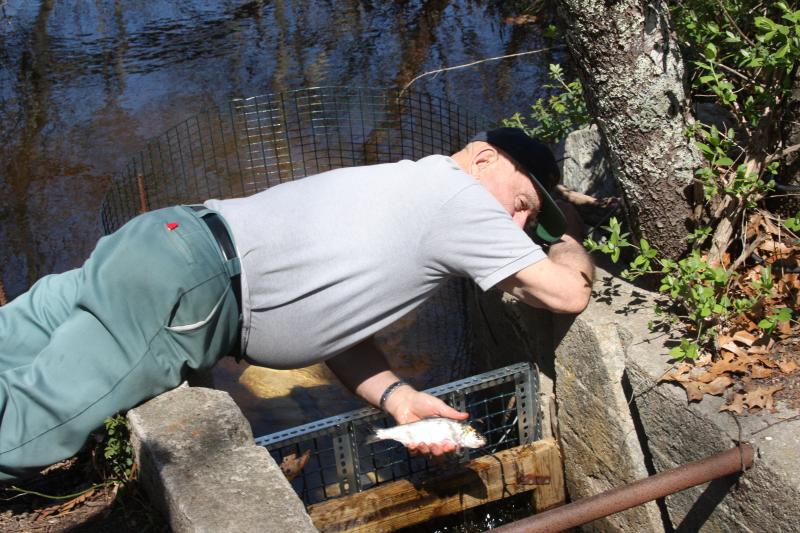With video: Keeping track of the herring
It’s springtime and the herring are here. Herring use five runs located in Wareham to travel from the ocean and upstream to spawn.
The fish that pass through Wareham are one of two species of river herring: Alewifes and blueback herring. Both are anadromous fish, meaning that they live most of their lives in the ocean but return to streams and ponds to lay their eggs.
Like salmon, herring return to the same stream where they were born to lay their eggs. If a river is obstructed or otherwise altered to prevent the fish's return, the population will die out.
Unlike salmon, however, herring cannot jump out of the water and over waterfalls or other obstacles. They have to swim upstream using man-made "ladders" with "steps."
Herring Agent Jack Dixon patrols the herring runs, monitoring the water temperature and population of the fish. Dixon is a retired biologist at the state’s Marine and Wildlife Department. Now he focuses on making sure the herring take a safe trip upstream. He began his job with fellow Herring Agent George Fannell more than a decade ago.
The Agawam River Run at the Elks is the largest of the five in Wareham. It incorporates a new design called an Alaskan steeppass. The aluminum structure is more durable than the mostly concrete and wooden fishways, has a steeper slope and thus takes up less space, and creates so much turbulent water that the fish is almost pushed upstream.
The State of Massachusetts outlawed herring harvesting in 2005 after riverine herring populations dropped precipitously in 2000 after an almost-as-dramatic increase during the 1990s.
Dixon said that it is unlikely that the numbers of migrating herring would rebound enough to allow the harvesting of river herring any time soon.However, he is typically pleased to see the daily herring counts at the runs above 1,000. When he checked on April 30, the count was more than 1,200.
For an in-depth view of a day-in-the-life of the Herring Agent watch the video below.












